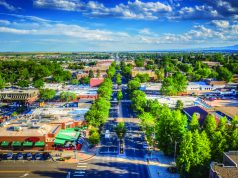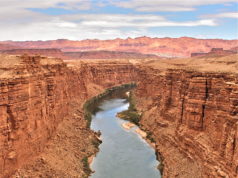The Review of U.S. Human Spaceflight Plans Committee has
now, after nearly five months of intensive work, delivered its final report to
the Obama administration, Congress, and the American people. The 155-page
report provides our country with options for the future of human spaceflight
beyond low-Earth orbit. I served as a member of the committee, and am
especially proud of the report for several reasons.
First, the report makes clear that the key choice facing us
is one of goals, not destinations. Too often the debate over human spaceflight
becomes an argument over destination: Should we go back to the moon? Mars? But
this risks choosing a destination first, then searching for reasons to justify
that choice. At least in part, that is what went wrong with the International
Space Station, a destination in low-Earth orbit that is still searching to
explain its purpose.
Instead, we need to decide on our goals for human
spaceflight, and have the destinations flow from these goals. The committee
concluded that human spaceflight serves a variety of national interests, but
sending humans beyond low-Earth orbit has as its fundamental goal charting a
path for human expansion into the solar system. This is ambitious, but if this
is not our goal, we should restrict ourselves to destinations in low-Earth
orbit. Human expansion into the solar system is a goal worthy of a great nation
working in concert with other space powers.
Second, the report insists on scientific integrity. Too
often, human spaceflight has been justified with exaggerated claims about its
scientific payoff. Exploration with astronauts can have significant scientific
benefits in several areas beyond the tautological justification of studying
what happens to humans in space. As was emphasized by scientists’ testimony to
the committee, astronauts have a tremendous advantage over robot spacecraft
when it comes to field geology. Simply being able to pick up a rock, turn it
over, expose a fresh surface with a hammer and then use geological expertise to
decide whether to move on to another rock is a human capability that blows away
what robot rovers can do. Similarly, the ability to service and repair space
observatories that face unanticipated problems favors the astronaut over the
robot.
But astronauts are also far more expensive than robot
explorers, and have their greatest advantage in the most complex environments
and circumstances. Mars is the most complicated surface environment we will
face, so it is where astronauts will provide the greatest advantage. But it
will be decades before humans walk on that world, and for most other science in
space, humans only get in the way. Worse, if NASA’s space science budget is not
protected, it can be raided to fund cost overruns in the human program. NASA’s
budget for science missions dropped by 30 percent in the six years prior to
2007. Human spaceflight needs to be aligned with national priorities. Cutting
key space-based research, especially Earth climate observations, instead puts
human spaceflight into opposition with those priorities.
{::PAGEBREAK::}
Third, the report calls for the government’s space agency to
concentrate on the hardest technological problems associated with our goals in
spaceflight. For the rest, including sending astronauts into low-Earth orbit,
the commercial sector should play a bigger role. The commercial sector should
“fill in” behind NASA, while NASA spearheads exploration out into the
solar system. One option for exploration is what the committee called
“flexible path,” a series of deep-space voyages of ever-increasing
ambition and complexity that will build our capabilities over time.
And finally, the report insists on budget and schedule
reality. At our current budget for human spaceflight — $99 billion over the
next 10 years — NASA cannot, in fact, do anything beyond low-Earth orbit. It
can afford to pay for the new rockets and astronaut capsule that will replace
the space shuttle and make it possible to journey outward, but not for systems
to land on the moon or for operations on the “flexible path” to take
astronauts to asteroids or to fly around Mars.
In the past, there have been too many glorious images of our
exciting future in space unmatched by the budget for a realistic path to that
future. The committee’s bottom line is that the United States should either
provide a budget to do the job, or acknowledge that it is scaling back its
ambitions in space.
Christopher Chyba is a professor of astrophysics and
international affairs at Princeton University’s Woodrow Wilson School, and was
a member of the Review of U.S. Human Spaceflight Plans Committee. Readers may
write to him at: Woodrow Wilson School of Public and International Affairs,
Princeton University, 218 Bendheim Hall, Princeton, N.J. 08544; e-mail: [email protected]. Via
McClatchy-Tribune News Service.














